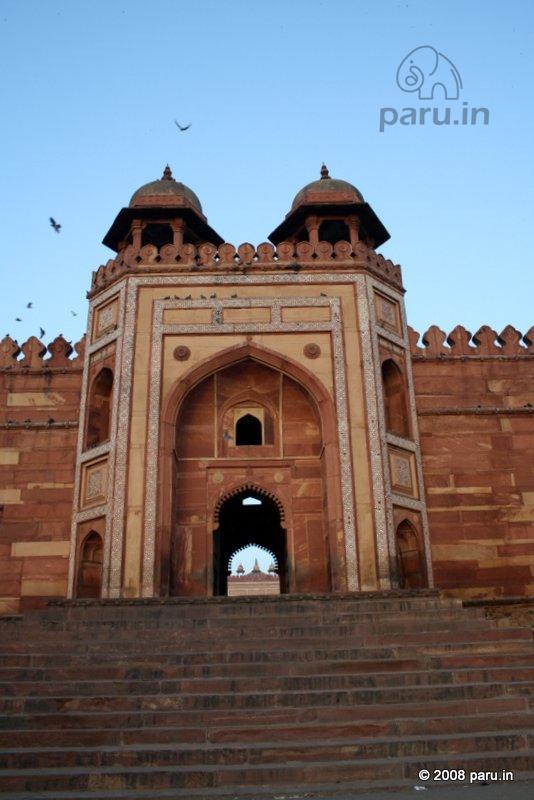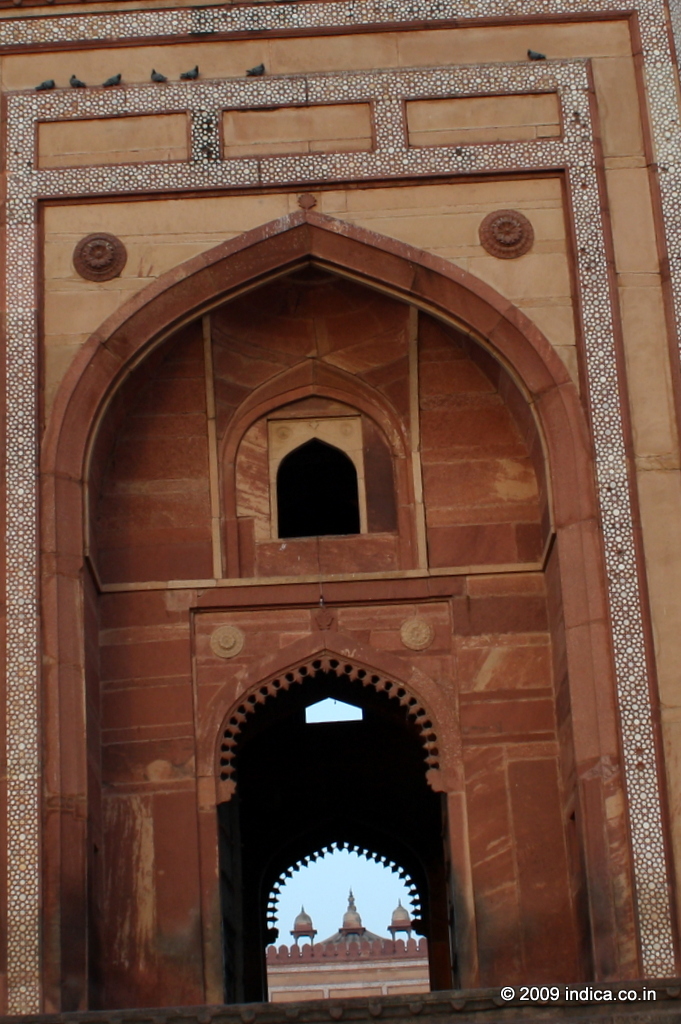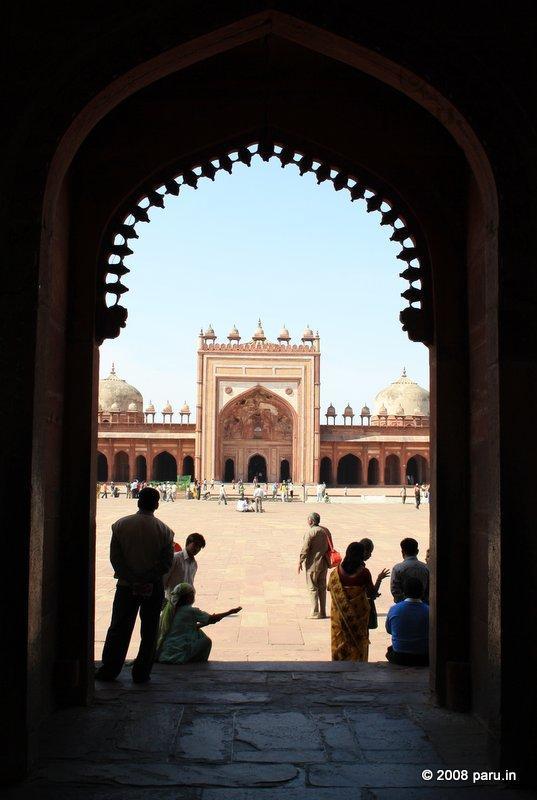Badshahi Darwaza
R
oyal entrance to the congregational prayer. The emperor often took part in the congregational prayer especially the one held on Fridays.To ensure that the emperor did not face any difficulty in approaching this prayer a special entrance was created for him.
This entrance was called the Badshahi darwaza (royal entrance). It was created to enter the eastern side of the Jama Masjid at Fatehpur Sikri that faces Agra and was the main entrance to the mosque.
Badshahi darwaza projects out in the form of a porch that is half hexagonal in shape and has two kiosks and merlons at the top of the construction. The gateway is grand and imposing as befits any entrance particularly meant for royalty. It is a standing example of the grand style that was preferred by the Mughal emperors when the Mughal reign was at its best in the country.
The Fatehpur Sikri Badshahi Darwaza is decorated with bands of buff sandstone. This sandstone has been carved in geometrical shapes as is commonly found in most Islamic architectural ornamentation. There are also two arches, one on top of the other and are beautifully decorated with carvings.
There is a cusped small entrance arch inside which is decorated with lotus buds and leads to a vestibule that is hexagonal in shape. The vestibule has a segmented shaped dome which is crowned by a flat roof.
There is a gallery on the upper storey and there are many arched recesses on both sides and cusped arches on the top. The Badshahi Darwaza is an excellent piece of Mughal architecture.
A little ahead around the corner is the Houses of Abul Fazl and Faizi , the two scholar brothers of Akbar’s court.

Badshahi Darwaza at Fatehpursikri faces in the direction of Agra

Badshahi Darwaza, also called the King's Gateway to to the cathedral mosque
Badshahi Darwaza, also called the King's Gateway to to the cathedral mosque

Fatehpur sikri Inside Jama Masjid viewed from Badshahi Darwaza
Fatehpur sikri Inside Jama Masjid viewed from Badshahi Darwaza
